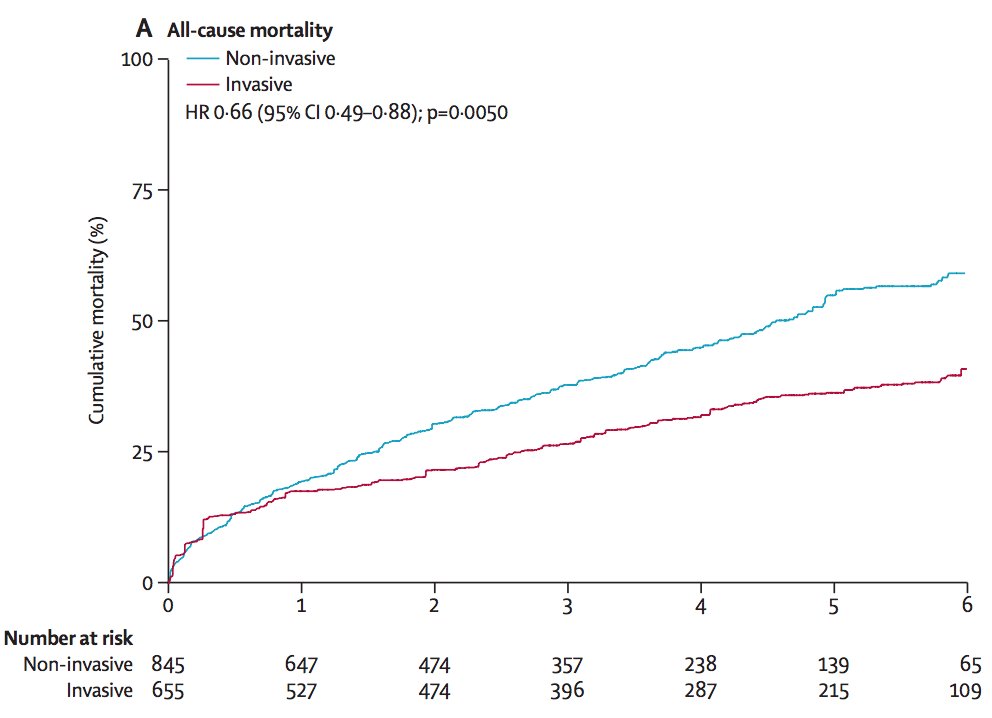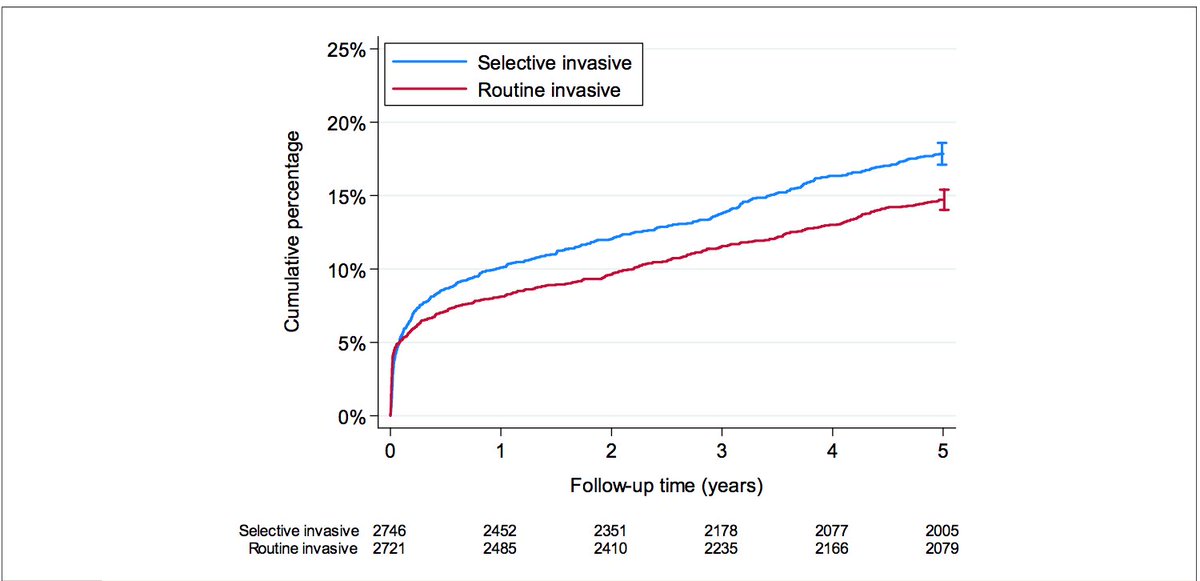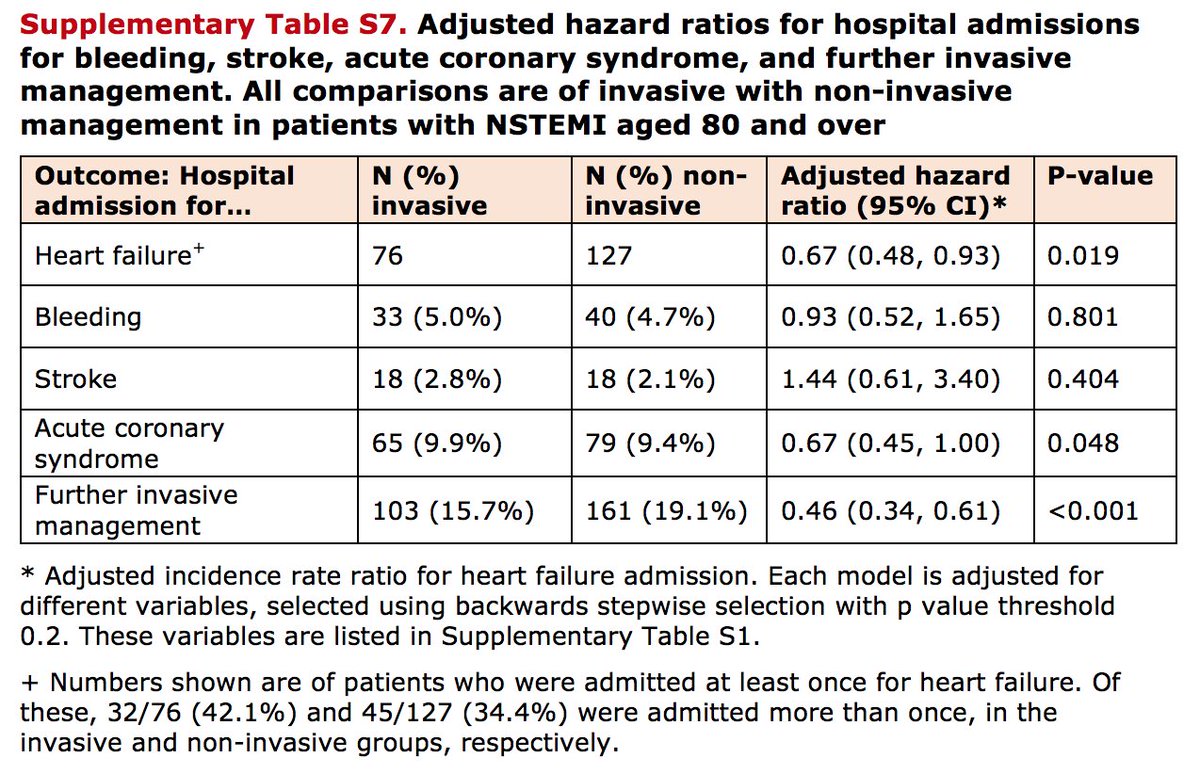1/11
The Lancet just published the SENIOR-NSTEMI trial ( https://www.thelancet.com/journals/lancet/article/PIIS0140-6736(20)30930-2/fulltext)">https://www.thelancet.com/journals/... with very interesting findings:
The Lancet just published the SENIOR-NSTEMI trial ( https://www.thelancet.com/journals/lancet/article/PIIS0140-6736(20)30930-2/fulltext)">https://www.thelancet.com/journals/... with very interesting findings:
2/11
 https://abs.twimg.com/emoji/v2/... draggable="false" alt="✅" title="Fettes weißes Häkchen" aria-label="Emoji: Fettes weißes Häkchen">Prospective observational data from 5 collaborating Hospitals in the UK 2010-2017
https://abs.twimg.com/emoji/v2/... draggable="false" alt="✅" title="Fettes weißes Häkchen" aria-label="Emoji: Fettes weißes Häkchen">Prospective observational data from 5 collaborating Hospitals in the UK 2010-2017
 https://abs.twimg.com/emoji/v2/... draggable="false" alt="✅" title="Fettes weißes Häkchen" aria-label="Emoji: Fettes weißes Häkchen">NSTEMI patients
https://abs.twimg.com/emoji/v2/... draggable="false" alt="✅" title="Fettes weißes Häkchen" aria-label="Emoji: Fettes weißes Häkchen">NSTEMI patients
 https://abs.twimg.com/emoji/v2/... draggable="false" alt="✅" title="Fettes weißes Häkchen" aria-label="Emoji: Fettes weißes Häkchen">80 years or older
https://abs.twimg.com/emoji/v2/... draggable="false" alt="✅" title="Fettes weißes Häkchen" aria-label="Emoji: Fettes weißes Häkchen">80 years or older
 https://abs.twimg.com/emoji/v2/... draggable="false" alt="✅" title="Fettes weißes Häkchen" aria-label="Emoji: Fettes weißes Häkchen">comparing invasive versus noninvasive management within 3 days of the peak troponin concentration
https://abs.twimg.com/emoji/v2/... draggable="false" alt="✅" title="Fettes weißes Häkchen" aria-label="Emoji: Fettes weißes Häkchen">comparing invasive versus noninvasive management within 3 days of the peak troponin concentration
3/11
 https://abs.twimg.com/emoji/v2/... draggable="false" alt="❌" title="Kreuzzeichen" aria-label="Emoji: Kreuzzeichen">excluding from the initial modelling steps patients who DIED within 3 days of peak troponin dosage (to avoid immortal time bias) and after propensity score adjustment (looking over more than 70 variables) and excluding pts extremes of propensity score strata
https://abs.twimg.com/emoji/v2/... draggable="false" alt="❌" title="Kreuzzeichen" aria-label="Emoji: Kreuzzeichen">excluding from the initial modelling steps patients who DIED within 3 days of peak troponin dosage (to avoid immortal time bias) and after propensity score adjustment (looking over more than 70 variables) and excluding pts extremes of propensity score strata
4/11
the KM curve for all-cause mortality (weighted to inverse probability of treatment received) looks like this:
the KM curve for all-cause mortality (weighted to inverse probability of treatment received) looks like this:
5/11 we must congratulate the authors ( @ProfDFrancis between them) as it ADDS important information
1) Favours invasive strategy as routine in advanced age (usually excluded /underrepresented in RCTs)
2) Same findings as small randomised trials (AFTER-EIGHTY and Elderly-ACS)
1) Favours invasive strategy as routine in advanced age (usually excluded /underrepresented in RCTs)
2) Same findings as small randomised trials (AFTER-EIGHTY and Elderly-ACS)
6/11
3) Low bleeding rates of invasive strategy (reflecting higher radial use / low GIIb/IIIa use) even is this high risk pop.
3) Low bleeding rates of invasive strategy (reflecting higher radial use / low GIIb/IIIa use) even is this high risk pop.
7/11 ONE point caught my attention: Why the KM “opens” only after 1 year ??
Looking at meta-analysis of routine invasive x selected invasive trials in NSTEMI/UA the curves separates at 1 year but afterwards they look quite stable
https://pubmed.ncbi.nlm.nih.gov/20359842/ )">https://pubmed.ncbi.nlm.nih.gov/20359842/...
Looking at meta-analysis of routine invasive x selected invasive trials in NSTEMI/UA the curves separates at 1 year but afterwards they look quite stable
https://pubmed.ncbi.nlm.nih.gov/20359842/ )">https://pubmed.ncbi.nlm.nih.gov/20359842/...
8/11 Look at this KM (from : https://pubmed.ncbi.nlm.nih.gov/20359842/ )">https://pubmed.ncbi.nlm.nih.gov/20359842/...
9/11 HYPOTHESIS ?
1) Residual confounding ? (those with noninvasive management with known prior coronary anatomy and less amenable to revascularization ? other prognostic factors
1) Residual confounding ? (those with noninvasive management with known prior coronary anatomy and less amenable to revascularization ? other prognostic factors
10/11
2) Less ACS after 1 year in the invasive group due to more complete revascularization? Adjusted HR of 0.67 (95% CI 0.45-1.00 and P value 0.048) for less ACS in the follow up -favouring the invasive group (table S7, below) - prob NOT
2) Less ACS after 1 year in the invasive group due to more complete revascularization? Adjusted HR of 0.67 (95% CI 0.45-1.00 and P value 0.048) for less ACS in the follow up -favouring the invasive group (table S7, below) - prob NOT

 Read on Twitter
Read on Twitter




